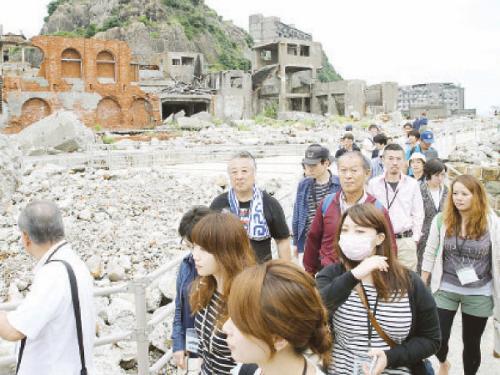-
Tips for becoming a good boxer - November 6, 2020
-
7 expert tips for making your hens night a memorable one - November 6, 2020
-
5 reasons to host your Christmas party on a cruise boat - November 6, 2020
-
What to do when you’re charged with a crime - November 6, 2020
-
Should you get one or multiple dogs? Here’s all you need to know - November 3, 2020
-
A Guide: How to Build Your Very Own Magic Mirror - February 14, 2019
-
Our Top Inspirational Baseball Stars - November 24, 2018
-
Five Tech Tools That Will Help You Turn Your Blog into a Business - November 24, 2018
-
How to Indulge on Vacation without Expanding Your Waist - November 9, 2018
-
5 Strategies for Businesses to Appeal to Today’s Increasingly Mobile-Crazed Customers - November 9, 2018
Japan’s Meiji industrial revolution sites win United Nations world heritage nod
Japan registered a set of early industrial facilities on the UNESCO World Heritage list Sunday after agreeing with South Korea to attach a footnote on its past use of Korean slave labor at the sites.
Advertisement
The fact that tens of thousands of Koreans were forced to toil at the Japanese industrial facilities during World War II was brought to the attention of the worldwide community a year ago as South Korea protested Japan’s bid to list them as world heritage.
South Korea had initially opposed the sites’ nomination, but Seoul withdrew its objections on condition that Japan concede that many Koreans had been forced to work at seven of the facilities before and during World War II. With this registration, Korea now has twelve cultural heritage sites listed on the UNESCO list.
Other assets include Hashima Coal Mine commonly known as Gunkanjima as well as the giant cantilever crane at Mitsubishi Nagasaki Shipyard, which is still in operation.
Japan pledged to “sincerely respond” to recommendations from the ICOMOS, the World Heritage Committee’s advisory body, to develop “interpretive strategy” that allows “an understanding of the full history of each site”, and to take “appropriate measures” to remember victims such as establishing information centers.
In an explanation given in English at the July 5 meeting, Japanese officials said that in the 1940s, individuals from the Korean Peninsula were brought to some of the sites “against their will” and “forced to work under harsh conditions”.
Japan tried to minimize already strained diplomatic relations with South Korea – as well as many other Asian nations with conflicting views of Japan’s war-time history – by nominating the specific historic period from 1850-1910, prior the controversial occupation of the Korean peninsular.
The committee was scheduled to discuss Japan’s bid on Saturday, but deliberations were postponed until Sunday because of a row between Japan and South Korea over remarks to be made at the meeting.
That paved the way for Sunday’s decision, which was celebrated in Japan yesterday.
The Japanese government has also issued numerous apologies for its wartime wrongs, but these are regularly undermined in Korean eyes by apparent backtracking by a minority of right wing politicians, including Prime Minister Shinzo Abe. “We will renew our resolve to preserve these wonderful heritage sites that tell the accomplishments of our ancestors and pass them on to the next generation”, he said in a statement.
South Korean Foreign Minister Yun Byung-se said the country was pleased that the sites were recognized “in the form that takes account of our legitimate concerns”.
Advertisement
The additions will raise the number of World Heritage sites in Japan, including group listings, to 19 – four natural and 15 cultural sites.





























![[WEF] S. Korea’s National Competitiveness Remains at 26th](https://www.lidtime.com/wp-content/uploads/2015/09/WEF-S-Korea-s-National-Comp-299x150.jpg)